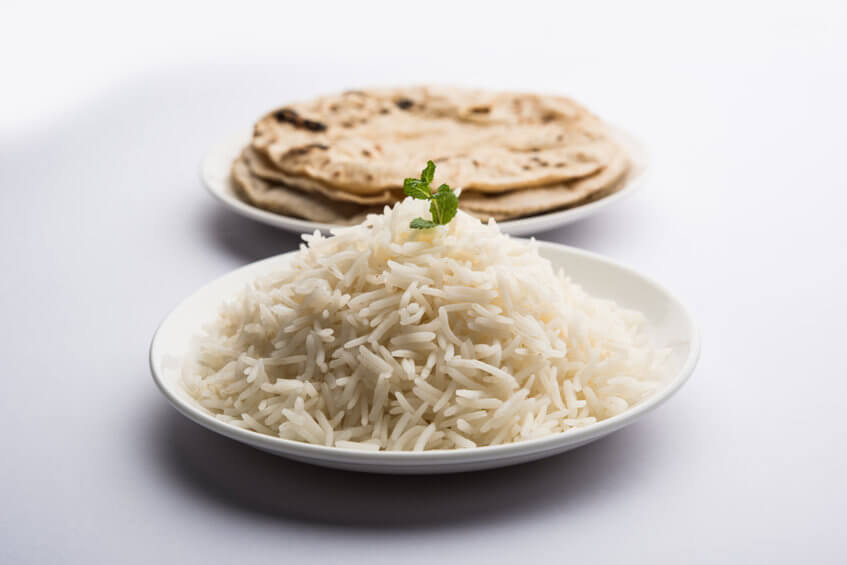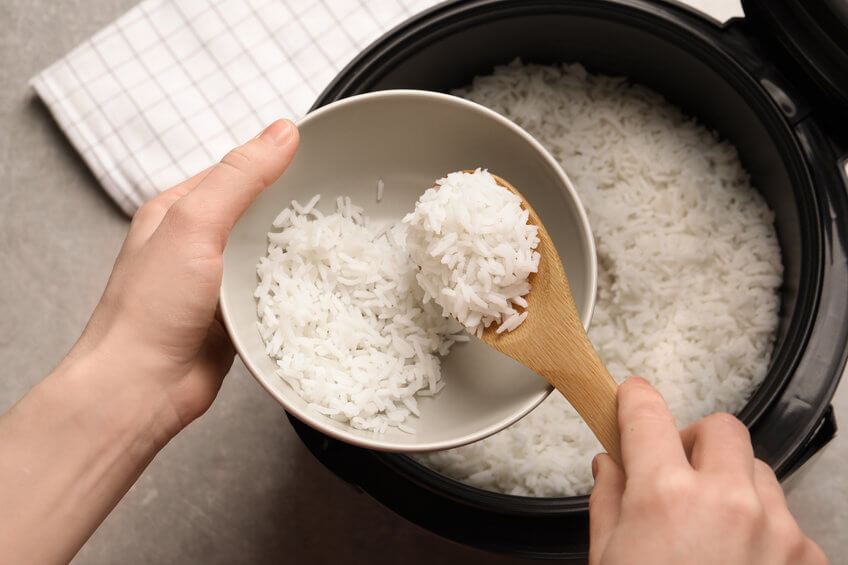Did you know there are more than 120,000 varieties of rice? These varieties can be classified by kernel size, milling process, starch content, and flavor. Today, let’s talk about two specific varieties that are known for their unique flavor and aroma. What exactly is the difference between basmati and jasmine rice?
Basmati Rice

The word “Basmati” comes from the Sanskrit word “basamati,” and it means “fragrant.”
Native to India (where two-thirds of the world’s basmati crops are grown) this aromatic long grain rice is well known for its nutty, almost “popcorn-like” smell.
Archeologists have discovered grains of rice dating back to 2000 BC that are likely the genetic ancestors of the modern basmati grain we enjoy today.
Nutrition
Basmati rice is a great choice for diabetics, as it has a much lower glycemic index compared to other white rice options. Not only that, but basmati rice is a whole grain that is high in soluble fiber—which can help reduce the risk of developing diabetes, cancer, or heart disease.
It’s also high in thiamine (vitamin B1) which supports brain health.
The other vitamins and minerals in basmati rice include vitamin B6, copper, folate, iron, magnesium, phosphorus, and zinc.
It is possible to buy brown basmati rice (which is simply a less-processed version of the same grain) but it is harder to digest than the white rice basmati most people are used to.
Preparation
It’s best to soak basmati rice in water for 30 minutes, or at least heavily rinse it before preparation. This process will remove the natural layer of starch and keep your rice from sticking or clumping together once it is cooked.
If you have a rice cooker, you can prepare your basmati rice in it with just a few modifications. Use 1.5-1.75 cups of water per cup of rice, and consider adding a little butter, ghee, or oil (this will help keep the grains from sticking together while cooking.) You could also add spices like saffron or cinnamon to flavor and color your rice while it cooks.
Without a rice cooker, the best way to cook basmati is to boil it. Use 1-1.5 cups of water for each cup of rice, and bring to a boil. Cover, turn down the heat and simmer for 15-20 minutes (or until the water is absorbed.)
Once fully cooked, fluff with a fork before serving.
If everything went according to plan, you should have a bowl full of fluffy, soft rice that is slightly dry—perfect as the base for thick, hearty curries (or any other saucy, flavorful dish.)
You can also use basmati rice to try your hand at a flavorful pilaf or salad! No matter how you prepare it, basmati rice is a versatile grain that easily elevates simple dishes.
Jasmine Rice

One difference between basmati and jasmine rice is its country of origin. While basmati rice is from India, jasmine rice is native to Thailand and is also known as “Thai fragrant rice” or “Thai Hom Mali rice.”
It is also a long-grain fragrant rice, although another difference between basmati and jasmine rice is the smell. Jasmine rice shares the “popcorn-like” aroma of basmati rice, however, it is also known for having very floral tones.
This rice comes not only in white and brown varieties but also blue, purple, and red.
Nutrition
When it comes to the nutrition profile of jasmine rice, it depends on which type you are using.
White jasmine rice is a refined grain, which means it is lacking many of the nutrients that the whole grain brown jasmine rice contains.
Brown jasmine rice is high in fiber, vitamin B1, vitamin B6, magnesium, phosphorus, folic acid, selenium, and manganese.
Both brown and white jasmine rice are a great choice before and during pregnancy, as they are high in folic acid (which is linked to lower chances of birth defects.)
Preparation
When it comes to preparation, there is little difference between basmati and jasmine rice. Both can be prepared easily according to the directions of a traditional rice cooker, or boiled in a pot. Jasmine rice does not need to be soaked like basmati does, but it’s always best practice to give it a good rinse.
If boiling, use a ratio of 1 cup of rice to every 1.25 cups of water. Bring to a boil, cover, and let simmer for approximately 12 minutes. Fluff before serving.
So, What Is the Difference Between Basmati and Jasmine Rice?
Let’s recap some of the main differences we discussed:
- While they share a similar smell, basmati rice is known for being nuttier, whereas jasmine rice is known for being more floral.
- Basmati rice requires a little more time and preparation than jasmine rice since it is best soaked before cooking.
- Their countries of origin are different (India vs. Thailand) as well as their known history (basmati rice has ancestry dating back to 2000 BC, jasmine rice was not discovered until 1945.)
- The textures of each are slightly different as well, despite their similar shape and size; basmati rice is a bit drier and chewier than the softer, fluffier jasmine rice.
- Basmati rice is also much lower on the glycemic index than jasmine rice, making it a better choice for diabetics or those who follow a low-carb diet.
In reality, these two varieties of rice have much more in common than things that separate them. They’re both fragrant long-grain varieties of rice; both are high in many of the same vitamins and minerals in their unrefined state.
Their shared “popcorn-like” smell comes from the same amino aldehyde gene.
Once cooked, both of these types of rice become fluffy, not sticky. This makes these rice varieties perfect dinner companions to thick, saucy Indian and Thai dishes. Basmati rice traditionally makes a great base for curries or can be used to create a pilaf or salad, while jasmine rice is great in stir-fries, congee, and rice puddings.
Seek out some recipes, and try these rice varieties for yourself! Whether you choose white basmati rice or purple jasmine rice, you’re sure to be pleased with the subtle flavor and trademark aroma of these versatile grains.

